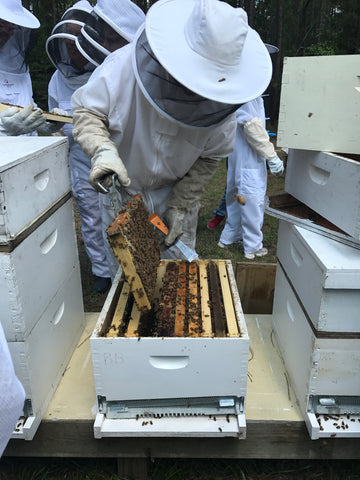Proactively Managing Bee Hive Expansion
Warning! Warning! Spring has sprung—whether the temperature and weather conditions feel like it or not! There's not a beekeeper around who hasn’t been nose-to-the-window all winter, waiting for the first bud to pop on a maple or elm tree. (I dare you to say I’m wrong.) Now that those first buds are showing, we’ve got work to do!
Picture the inside of your hive right now: thousands of worker bees, old and new, milling around with one focus in mind—build population for the nectar flow to produce a honey crop for next winter. It might seem simplistic that their world revolves around just two seasons: spring and winter. But when you break down what it takes to survive and thrive in both, the level of activity required by both bee and beekeeper makes it clear how important this time is.
Staying ahead of hive growth is a real challenge. Whether you're building bees for honey production or preparing for splits, let’s face it—you’re building bees so you can split, all while carefully working to avoid swarming. Consider this: a queen bee lays eggs at a rate of about 2,000 per day. There are 3,200 cells per side of a deep frame (6,400 per frame). That means a queen can fill a frame with developing brood in just three days. Within three weeks, you’re looking at roughly 6,400 new bees per frame of brood, per colony. In reality, most hives will gain 35,000 or more bees over the next month to six weeks.
Wow! Can you keep up with that? The answer is yes—in case you didn’t feel the bold confidence needed to say it.

Start Now!
For every hive that is more than 80% full of bees, it’s time to add a box. Here are some key recommendations:
-
Use drawn foundation in the added brood box
-
Pyramid the frames
-
Feed
-
Equalize your beeyard
1) Drawn Comb
Not everyone has an abundance of drawn comb stored. Foundation is fine, but know that you’ll need to feed. While I recommend feeding regardless, syrup becomes especially important when comb needs to be drawn. Bees must consume “nectar” (thin syrup) nonstop to stimulate their wax glands and produce wax. This is critical.
Bees use about 6 lbs. of honey to produce 1 lb. of wax. Bees can produce 8 wax flakes in around 12 hours.
That gives you an idea of just how patient and hardworking they are when it comes to building comb for brood and food storage.
2) Pyramiding
Not all beekeepers adopt this approach. We discovered this method while researching “maximizing honey production” for an ABF conference years ago. In our research, we came across an insightful article by Morris Ostrofsky, who focused on increasing honey yield by helping bees reach maximum population quickly through a method called pyramiding.
Pyramiding is a technique used to give the queen and workers immediate access to two brood boxes, which increases population growth while reducing crowding. It’s done at the time a second brood box is added to a hive that already has one. Whenever possible, drawn frames are preferable to foundation frames.
In Ostrofsky's version of pyramiding, he pulled half of the brood frames from the bottom box, without specifying the stage of brood. We’ve found that pulling a frame of open brood, along with resource frames containing brood at all stages, works well to draw the queen upward and encourage her to continue laying in the open brood frame.

3) Feed
The importance of feeding your bees cannot be overstated. As populations grow at an explosive rate, nature often falls short of producing the resources needed to keep up with the demand for food—all those larval mouths need feeding (figuratively speaking). Bees starve in March. That may sound harsh, but it makes sense when you consider the population growth mentioned earlier.
Switch to a 1:1 sugar syrup now. This mimics the viscosity of nectar and will be readily accepted and used by the bees. Don’t stop feeding until the nectar flow begins in your area. For two-thirds of the nation, that typically starts around mid-April to early May. Check out our selection of bee feeders.
4) Equalizing Your Beeyard
I’ve written (and rewritten) articles on this topic many times. Equalizing your bees ranks among the top three beekeeping management skills needed to succeed. For those wondering, the other two are controlling Varroa mites and providing good nutrition. Read the article “Bee Yard Shuffle”—then go do it!
Happy spring, y’all!
Chari Elam

